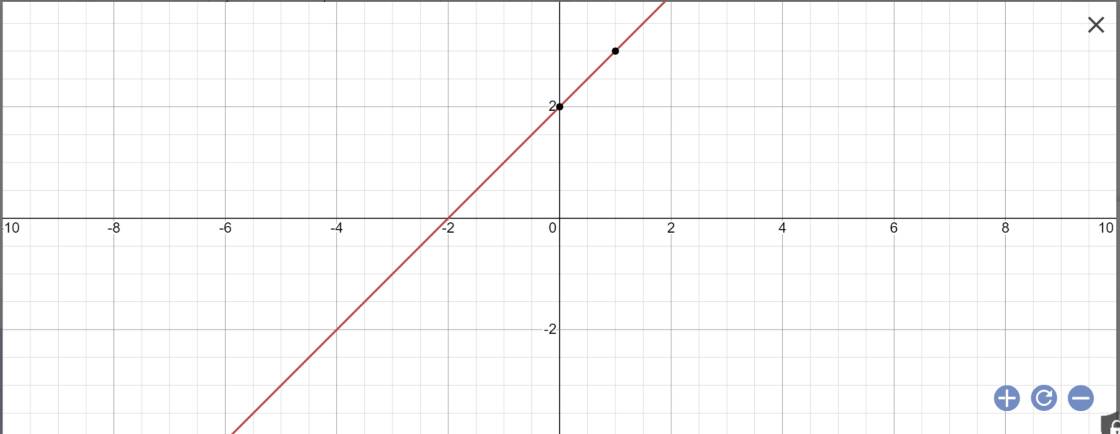Cho hám số y = (m-1)x .(Với M khác 0 )
a) Vẽ đố thi hàm số với m = -1
b) Tím tọa độ của điểm M( xm ;-6 ) mà đồ thị hàm số ở câu a đi qua
Hãy nhập câu hỏi của bạn vào đây, nếu là tài khoản VIP, bạn sẽ được ưu tiên trả lời.

a: (d): y=(m-1)x+m-3
Thay x=0 và y=1 vào (d), ta được:
0(m-1)+m-3=1
=>m-3=1
=>m=4
b: Tọa độ A là;
\(\left\{{}\begin{matrix}x=0\\y=0\left(m-1\right)+m-3=m-3\end{matrix}\right.\)
=>OA=|m-3|
Tọa độ B là:
\(\left\{{}\begin{matrix}y=0\\x\left(m-1\right)+m-3=0\end{matrix}\right.\Leftrightarrow\left\{{}\begin{matrix}y=0\\x=\dfrac{-m+3}{m-1}\end{matrix}\right.\)
=>\(OB=\left|\dfrac{m-3}{m-1}\right|=\dfrac{\left|m-3\right|}{\left|m-1\right|}\)
ΔOAB vuông cân tại O
=>\(\left|m-3\right|=\dfrac{\left|m-3\right|}{\left|m-1\right|}\)
=>\(\left|m-3\right|\left(1-\dfrac{1}{\left|m-1\right|}\right)=0\)
=>m-3=0 hoặc m-1=1 hoặc m-1=-1
=>m=3 hoặc m=2 hoặc m=0

1: Để (d)//(d') thì \(\left\{{}\begin{matrix}m-3=1\\2\ne-5\left(đúng\right)\end{matrix}\right.\)
=>m-3=1
=>m=4
Thay m=4 vào (d), ta được:
\(y=\left(4-3\right)x+2=x+2\)
Vẽ đồ thị:

2: Tọa độ A là:
\(\left\{{}\begin{matrix}y=0\\\left(m-3\right)x+2=0\end{matrix}\right.\Leftrightarrow\left\{{}\begin{matrix}y=0\\x\left(m-3\right)=-2\end{matrix}\right.\)
=>\(\left\{{}\begin{matrix}x=-\dfrac{2}{m-3}\\y=0\end{matrix}\right.\)
Vậy: \(A\left(-\dfrac{2}{m-3};0\right)\)
Tọa độ B là:
\(\left\{{}\begin{matrix}x=0\\y=\left(m-3\right)\cdot x+2=0\left(m-3\right)+2=2\end{matrix}\right.\)
vậy: B(0;2)
\(OA=\sqrt{\left(-\dfrac{2}{m-3}-0\right)^2+\left(0-0\right)^2}\)
\(=\sqrt{\left(-\dfrac{2}{m-3}\right)^2+0^2}=\dfrac{2}{\left|m-3\right|}\)
\(OB=\sqrt{\left(0-0\right)^2+\left(2-0\right)^2}=2\)
Vì Ox\(\perp\)Oy
nên OA\(\perp\)OB
=>ΔOAB vuông tại O
=>\(S_{OBA}=\dfrac{1}{2}\cdot OA\cdot OB=\dfrac{1}{2}\cdot2\cdot\dfrac{2}{\left|m-3\right|}=\dfrac{2}{\left|m-3\right|}\)
Để \(S_{OAB}=2\) thì \(\dfrac{2}{\left|m-3\right|}=2\)
=>|m-3|=1
=>\(\left[{}\begin{matrix}m-3=1\\m-3=-1\end{matrix}\right.\Leftrightarrow\left[{}\begin{matrix}m=4\\m=2\end{matrix}\right.\)